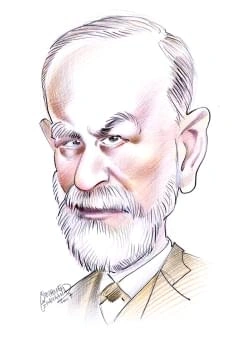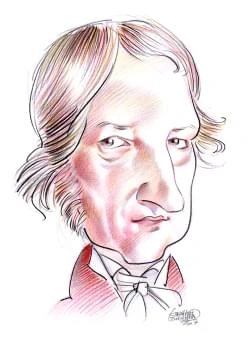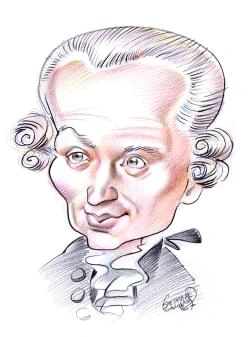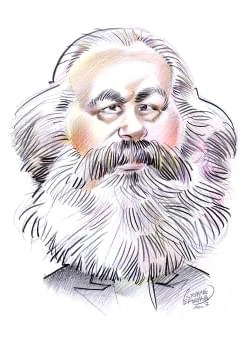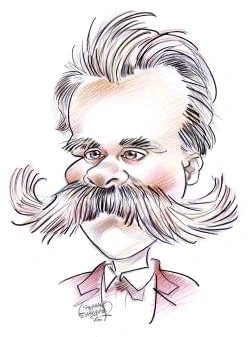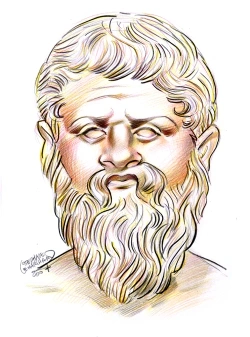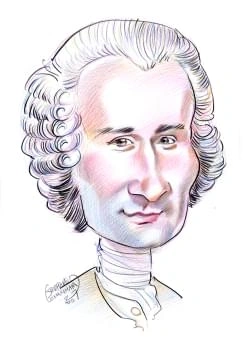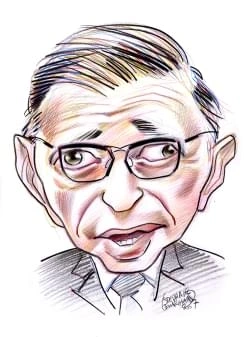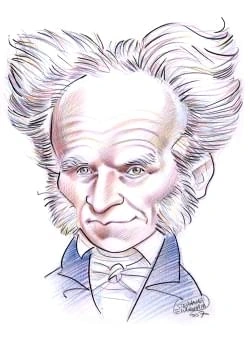681 résultats pour "history"
-
Charles Dickens
I
INTRODUCTION
Charles Dickens
English author Charles Dickens ranks as one of the most popular writers in the history of world literature.
Papers of the Pickwick Club (1836-1837; 1837); The Adventures of Oliver Twist (1837-1839; 1838); The Life and Adventures of Nicholas Nickleby (1838-1839; 1839); The Old Curiosity Shop (1840-1841; 1841); Barnaby Rudge (1841); The Life and Adventures of Martin Chuzzlewit (1843-1844; 1844); Dombey and Son (1846-1848; 1848); The Personal History of David Copperfield (1849-1850; 1850); Bleak House (1852-1853; 1853); Hard Times (1854); Little Dorrit (1855-1857; 1857); A Tale of Tw...
- National Museum of Natural History.
-
Comedy
I
INTRODUCTION
Laurel and Hardy
Stan Laurel, in overalls, and Oliver Hardy, left, formed one of the most popular comedy teams in motion-picture history.
The elements and techniques of comedy are diverse and differ from culture to culture. More than tragedy or serious drama, comic entertainment is controlled by socialconventions that define the boundaries of acceptable humor and topics that are taboo or off-limits for humor. What is considered funny in one place and time may beforbidden culturally or viewed as infantile or in poor taste in another. Virtually every component of human behavior is subject to comic treatment. This includes bodilyfunc...
-
William Shakespeare
I
INTRODUCTION
William Shakespeare
English playwright and poet William Shakespeare, who lived in the late 1500s and early 1600s, is regarded as the greatest
dramatist in the history of English literature.
Avon, Warwickshire, a prosperous town in the English Midlands. Based on this record and on the fact that children in Shakespeare’s time were usually baptized two orthree days after birth, April 23 has traditionally been accepted as his date of birth. The third of eight children, William Shakespeare was the eldest son of John Shakespeare, a locally prominent glovemaker and wool merchant, and Mary Arden, thedaughter of a well-to-do landowner in the nearby village of Wilmcote. The young Shakespeare...
-
Boer War - history.
On January 10, 1900, the British general Frederick S. Roberts was sent to replace Buller as commander in chief. (Buller, however, remained to fight throughout the war.)Early in February, Roberts ordered the British commander John D. P. French north to relieve the city of Kimberley; French’s objective was attained four days later.Simultaneously, Roberts undertook a northeastward march from Cape Colony into the Orange Free State. Attacked by the Afrikaner general Piet Cronje on February 27,Roberts...
-
Jomo Kenyatta - history.
the challenge to his leadership and appealed for Kikuyu ethnic solidarity. The 1969 assassination of cabinet minister Tom Mboya—a Luo ally of Kenyatta’s—by a Kikuyu ledto months of tension and violence between the Luo and the Kikuyu. Kenyatta banned Odinga’s party, detained its leaders, and called elections in which only KANU wasallowed to participate. For the remainder of his presidency, Kenya was effectively a one-party state, and Kenyatta made use of detention, appeals to ethnic loyalties, an...
-
Idi Amin - history.
moderate his policies, the rulers of other African states elected him chair of the Organization of African Unity for a one-year term in 1975. In 1976 Palestinian and West German terrorists hijacked an Air France plane with a large number of Israeli passengers, and Amin allowed them to land at Entebbe Airportand use it as a base. An Israeli commando raid successfully rescued more than 100 hostages; three hostages, all of the terrorists, an Israeli commander, and 20 to 40Ugandan soldiers were kill...
-
Pan-Africanism - history.
Edward Wilmot BlydenEdward Wilmot Blyden (1832-1912) was an early proponent of Pan-Africanism and a leading black intellectual and scholar of Africanculture. Born in the Virgin Islands, Blyden moved to the West African nation of Liberia in 1851 and promoted the repatriation of freeAmerican blacks to Liberia. He hoped that Liberia, as an independent black-ruled nation, would become a beacon of Pan-Africanism,displaying the great achievements of Africans and people of African descent.Library of Co...
-
-
Inca Empire - history.
rediscovered the site in 1911.© Microsoft Corporation. All Rights Reserved. Inca society was strictly organized, from the emperor and royal family down to the peasants. The emperor was thought to be descended from the sun god, Inti, and hetherefore ruled with divine authority. All power rested in his hands. Only the influence of custom and the fear of revolt checked the emperor’s power. The emperor had oneofficial wife, but he had many royal concubines and his children by these wives often numbe...
-
Maya Civilization - history.
III CLASSIC PERIOD Maya Ruins, El SalvadorThe Maya occupied a large part of Central America, and their civilization reached its height between ad 300 and 900. Many ruins ofthe ancient civilization have been excavated in El Salvador, including huge limestone pyramids.Susan McCartney/Photo Researchers, Inc. Classic Maya civilization became more complex in about AD 300 as the population increased and centers in the highlands and the lowlands engaged in both cooperation and competition with each o...
-
Acadia - Canadian History.
Contributed By:John G. ReidMicrosoft ® Encarta ® 2009. © 1993-2008 Microsoft Corporation. All rights reserved.
-
Mao Zedong - History.
outside the government was also muted because the educated elite remembered the turmoil of the “Hundred Flowers” and “Antirightist” campaigns of 1957. Mao’srelationship with intellectuals was an uneasy one, and he was critical of the gap between the lives of the urban educated elite and the rural masses. These tensions wereamong the underlying causes of the Cultural Revolution, a period of social unrest and political persecution launched by Mao in 1966. Mao mobilized youth into the RedGuards to...
-
Aboriginal Australians - history.
Current archaeological evidence suggests that human occupation of Australia began around 50,000 to 60,000 years ago. The first settlers are believed to havemigrated from Southeast Asia in gradual stages, by way of the islands of Indonesia. Around 50,000 years ago sea levels were as much as 120 m (390 ft) lower thanthey are today, and Australia was joined with New Guinea and Tasmania to form one giant landmass called Sahul, or Greater Australia. Scholars believe that the firstmigrants to Sahul ca...
-
Qin Dynasty - History.
measurements. All of these contributed greatly to the Qin's new centralized economy. C Government The Qin government was totalitarian, based on the philosophy of Fajia (Legalism), which placed absolute power in the hands of the ruler, who governed by means of strict laws and harsh punishments. Practical reformers and scholars such as Shang Yang (d. 338 BC) and Han Fei (280?-233 BC) saw Legalism as a way to create a highly efficient, albeit ruthless, administrative apparatus. Qin Shihuangdi...
-
Genghis Khan - History.
died in August 1227, in his summer quarters in the district of Qingshui south of the Liupan Shan (Liupan Mountains) in Gansu, China. IV THE MONGOL FORCES Genghis Khan unleashed a seemingly invincible military force. Although usually outnumbered, his forces prevailed on the battlefield through absolute discipline, a well-understood chain of command, superior mobility, and innovative military tactics. The Mongol forces were organized into several formations of 10,000 horse-mounted soldiers, the...
-
Shang Dynasty - History.
The dynastic ancestors belonged to an elaborate religious pantheon that also included various nature powers and the Shang high god, Di. The higher powers were lessconcerned with the well-being of Shang society than the ancestors were. Di, whose wishes were often hard to determine, could even cause the Shang harm. The naturepowers could occasionally influence the wind, rain, and harvests, but only Di could actually order the weather. For an agricultural society such as the Shang, this wasperhaps...
-
-
Egyptian Art and Architecture - USA History.
The kings of the 1st Dynasty (2920 BC-2770 BC) were buried in the cemetery of their ancestors at Abydos in southern Egypt. Their burial sites were built of mud brick (bricks baked in the sun) and consisted of two parts: a tomb in the desert where the king was buried, and a rectangular funerary enclosure at the desert's edge, whererituals were performed. A pair of stone slabs called stelae marked the tombs and bore the name of the royal occupant. In the 2nd Dynasty (2770 BC-2649 BC), most r...
-
Indian Treaties in Canada - Canadian History.
Pontiac led an attack on British forts in the Great Lakes area to end British domination and to reinforce Indian autonomy. In response, British king George III issued theRoyal Proclamation of 1763 to try to appease the Indians of the interior. The proclamation set aside land for the Indians west of the Appalachian Mountains anddescribed this land as “lands reserved to [Indians] … as their Hunting Grounds.” The proclamation not only recognized Indian land ownership, but also required thattreaties...
-
Korean War - History.
During the summer of 1949, South Korea had expanded its army to about 90,000 troops, a strength the North matched in early 1950. The North had about 150 SovietT-34 tanks and a small but effective air force of 70 fighters and 62 light bombers—weapons either left behind when Soviet troops evacuated Korea or bought from theUSSR and China in 1949 and 1950. By June 1950 American data showed the two armies at about equal strength, with roughly equal numbers amassed along the 38thparallel. However, thi...
-
Western Music
I
INTRODUCTION
Bizet's Carmen
Georges Bizet's Carmen, first performed in Paris in 1875, was a milestone in the history of French opera.
church ceremonies during the period from the 5th to the 7th century. Roman chant became known as Gregorian chant after Pope Gregory I, the Great, who may havecomposed some of the melodies and who actively encouraged an orderly, ritualized use of music by the church. Because Gregory and later popes preferred Gregorianchant to the varieties that had developed elsewhere in Europe, Gregorian chant eventually superseded most of the others. Gregorian and other chant styles arepreserved in many manuscr...
-
Indus Valley Civilization - history.
Stone Tablets from Mohenjo-DaroThese stone tablets were found at Mohenjo-Daro, an archaeological site in modern Pakistan. The city of Mohenjo-Daro flourishedduring the Indus Valley civilization (2500?-1700 bc). Merchants used the stone tablets, which show examples of pictographic writing,to mark their goods.Charles and Josette Lenars/Corbis The Indus Valley civilization was first defined by the British archaeologist Sir John Marshall's diggings at Mohenjo-Daro and M. S. Vat's excavations at Hara...
- Gamal Abdel Nasser - history.
- African National Congress - history.
-
Exposé American History X
Affiche: Top of the movie poster, you can read the names of the two main actors. Below is the title "American history X" in capital letters. Center left, there is the quote of Abrahm Lincoln. Right. This is Derek, he puts his right hand over his "heart." Under his hand, you can see the tattoo of a swastika. The poster is in black and white. Avis : My opinion on this film, I think it makes you think. It is a very beautiful film with a beautiful moral. For his first film, it is very successf...
-
-
Mobutu Sese Seko - history.
Moroccan and Belgian troops and American and French military assistance. His political opponents formed the Union for Democracy and Social Progress (UDPS) in 1982, butthe party’s leaders were continually harassed and imprisoned throughout the 1980s. Mobutu consolidated his power by sharing the country’s wealth with political allies, asystem often described as a kleptocracy. Reportedly absconding with billions of dollars in Western aid and export earnings generated by the country's mineral wealth...
- Indus Valley Civilization - History.
- César Chávez - USA History.
- Kim Campbell - Canadian History.
- Meriwether Lewis - USA History.
-
Bill of Rights - history.
being indicted (formally accused) by a grand jury. Second, a criminal suspect may be prosecuted only once for each crime. If a jury acquits the accused person, there can beno retrial. Third, a person cannot be forced to testify against himself or herself in any criminal case. This is the right against self-incrimination. Fourth, the due process clausebars the government from arbitrarily depriving anyone of life, liberty, or property. Fifth, the government may not take anyone’s private property u...
-
Arab-Israeli Conflict - history.
Arab-Israeli War of 1948-1949As early as April 1948 the newly independent nation of Israel put into effect Plan Dalet, which called for the expulsion of PalestinianArabs from areas allotted to the Palestinians under the United Nations (UN) partition plan. The combined forces of several Arabnations and Palestinian guerrillas attacked the Israelis. Israel defeated the Arab forces between 1948 and 1949, taking much of theland that had been granted to the Palestinians by the UN in 1947. Unresolved t...
- Rosa Parks - USA History.
-
- Patrick Henry - USA History.
- Residential Schools - Canadian History.
- Great Wall (China) - History.
-
Mark Twain - USA History.
father, who keeps him prisoner in an isolated cabin. The boy escapes and, together with a runaway slave, Jim, sails down the Mississippi on a raft. During their trip,Huck and Jim encounter many unusual characters, including two families involved in a senseless feud and a pair of scoundrels who swindle innocent townspeople. Theirexperiences bring about a strong friendship between the boy and the slave, but their adventures end when Jim is captured and held at the farm of Tom Sawyer’s AuntSally. W...
-
Persian Gulf War - History.
to “use all necessary means” to force Iraq from Kuwait if Iraq remained in the country after January 15, 1991. The Iraqis rejected the ultimatum. Soon after the vote,the United States agreed to a direct meeting between Secretary of State James Baker and Iraq’s foreign minister. The two sides met on January 9. Neither offered tocompromise. The United States underscored the ultimatum, and the Iraqis refused to comply with it, even threatening to attack Israel. For the United States, themeeting was...
-
Paul Martin - Canadian History.
VI CONFLICT WITH THE PRIME MINISTER Martin’s success could not have been achieved without the support he received from Jean Chrétien. Yet relations between the two men continued to deteriorate. In partthis was because of their continuing disagreement about how best to deal with the separatist challenge in Québec. In the 1993 election, a majority of Québec seats hadgone to the Bloc Québécois, and in 1994 the provincial separatist party, the Parti Québécois, won election on a platform promising...
-
Arab-Israeli Conflict - History.
the Suez Canal and in 1951 blockaded the Strait of Tiran (Israel’s access to the Red Sea), which Israel regarded as an act of war. In June 1956 Egypt nationalized theSuez Canal, which had been jointly owned by Britain and France. In late October, Israel invaded the Gaza Strip and Sinai Peninsula, defeating Egyptian forces there.Britain and France attacked Egypt a few days later. Although the fighting was brief and Israel eventually withdrew from the Sinai and Gaza, the conflict furtherexacerbate...
-
Ronald Reagan - USA History.
deposed shah of Iran to enter the United States for medical treatment, a group of Iranian revolutionaries stormed the U.S. Embassy in Tehrān and held 53 Americansas hostages. United States media publicized the plight of the hostages and Carter’s failure to win their release. They were eventually released in January 1981, on theday of Reagan’s inauguration. The contrast between the television personalities of the two candidates was also very important. Carter’s stiff, nervous manner had never bee...
-
-
War of 1812 - History.
the thorough training they received in handling guns was far ahead of contemporary British standards. As hostilities loomed, Congress authorized a regular army of 35,000 men, but when the United States officially declared war in June 1812, the actual land force was lessthan 10,000 and nearly half of these soldiers were raw recruits. The existing troops were also widely scattered in small garrisons. The government planned tosupplement this regular force with 50,000 volunteers and 100,000 militiam...
-
Tennessee (state) - USA History.
The climate of Tennessee is characterized by hot summers, mild winters, and abundant rainfall. C1 Temperature Average July temperatures range from less than 21° C (70° F) in the Blue Ridge region to 27° C (80° F) at Nashville and Memphis. Maximum daytime temperatures insummer often rise above 35° C (95° F) in central and western Tennessee. Daytime temperatures in the mountains rarely rise above 32° C (90° F). Summer nights tendto be warm and muggy in central and western Tennessee, but temperatu...
-
U.S.-Iraq War - U.S. History.
I
INTRODUCTION
U.S.-Iraq War, military action begun in
B Making the Case for War B1 “Neoconservatives” and the Bush Doctrine Long before President George W. Bush took office in 2001, elements in or close to the Republican Party had called repeatedly for firmer U.S. steps against Iraq,including a war if necessary to force a regime change. One such group authored a white paper in 1996 called A Clean Break: A New Strategy for Securing the Realm , which was later sent to Prime Minister Benjamin Netanyahu, leader of Israel’s Likud Party. It advocated...
-
Algerian War of Independence - history.
In September 1956 the ALN stepped up guerrilla warfare within Algiers itself. Over the following months, Algerian civilians planted bombs in French cafés and public places,which significantly increased French civilian casualties. The French authorities arrested and tortured large numbers of guerrilla suspects, many of whom died underinterrogation. Ultimately, French forces tracked down most of the guerrillas, ending the so-called Battle of Algiers in the summer of 1957. The losses suffered by th...
-
Abraham Lincoln
I
INTRODUCTION
Abraham Lincoln (1809-1865), 16th president of the United States (1861-1865) and one of the great leaders in American history.
fence in 4 hectares (10 acres) to grow corn. Then he hired out to neighbors, helping them to split rails. That year, Lincoln attended a political rally and was persuaded tospeak on behalf of a local candidate. It was his first political speech. A witness recalled that Lincoln “was frightened but got warmed up and made the best speech of theday.” In 1831 Lincoln made a second trip to New Orleans. He was hired, along with his stepbrother and a cousin, by Denton Offutt, a Kentucky trader and specul...
-
George Washington
I
INTRODUCTION
George Washington (1732-1799), first president of the United States (1789-1797) and one of the most important leaders in United States history.
A2 Promotion This was Washington’s first experience with the difficulties of raising troops while lacking equipment, clothing, and funds. Apparently he thought his efforts worthy ofsome recognition and successfully applied to Dinwiddie for a lieutenant colonel’s commission. He left Alexandria, Virginia, early in April with about 150 poorly equippedand half-trained troops. A3 First Battles Before he had advanced very far, Washington received news that the French had driven Trent’s men back from...
- Elizabeth Cady Stanton - USA History.
- Red River Rebellion - Canadian History.
-
- John Marshall (jurist) - USA History.
- North West Company - Canadian History.
}})
